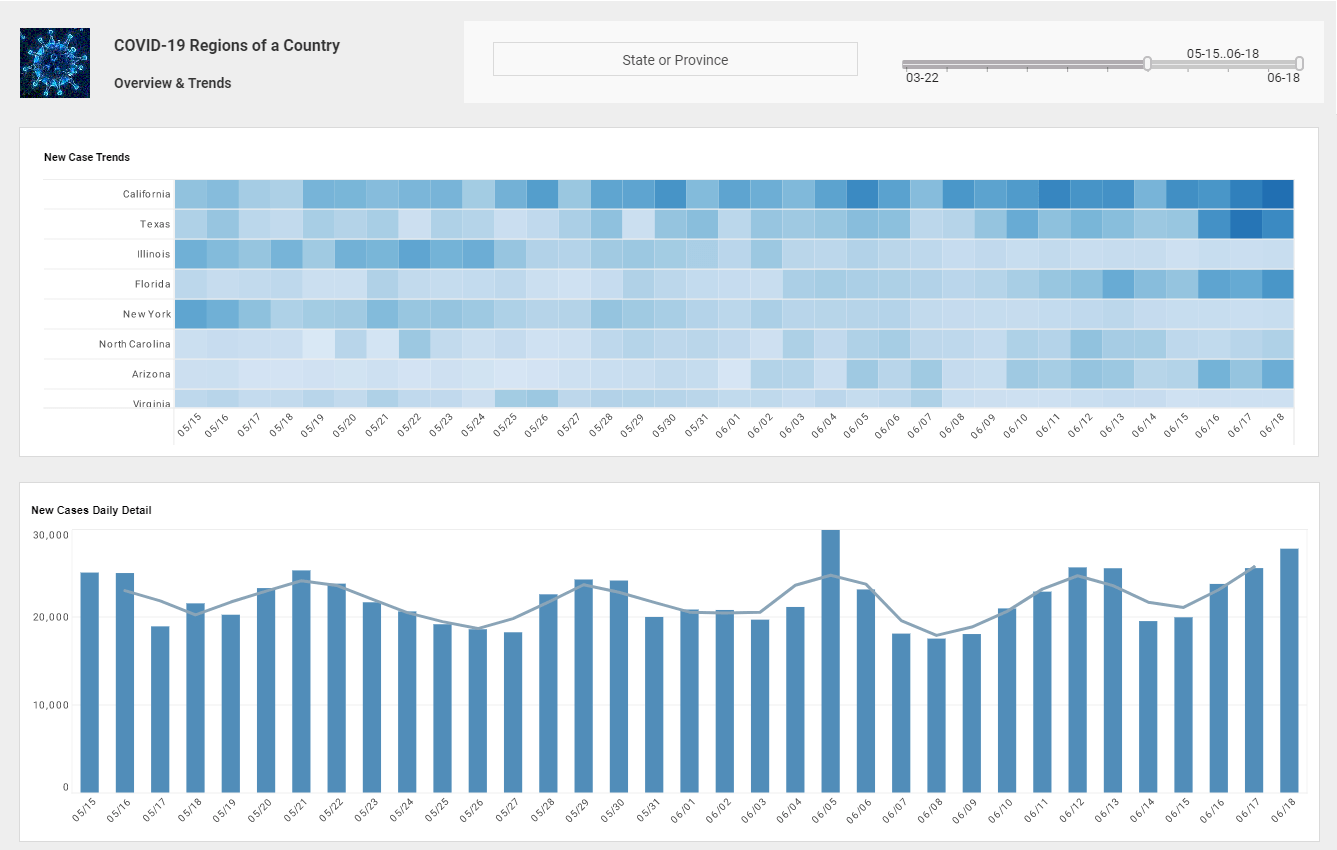Metrics for Data Quality - List and Definitions
The data used for a purpose must satisfy its requirements. The quality of data determines how far data satisfies the needs of the purpose it is used. There are several metrics used to determine data quality and it is important to know them.
Measuring data quality can be different for each business and it cannot be standardized. But there are metrics that can suit every business and they can choose to give importance according to their requirement. So, here are the top data quality metrics you must know.
| #1 Ranking: Read how InetSoft was rated #1 for user adoption in G2's user survey-based index | Read More |
Accuracy
This is an important factor that determines the correctness of your data with respect to reality. It is measured by comparing the data of a known or verified source. You can choose a source specific to your domain and find out the accuracy of your data. Every information you consider as a data value must be accurate and verified.
Lineage
Every data has a source of origin and it must be verified so that the quality is not questioned. So, the lineage in which the data was obtained must be confirmed. Only then, the trustworthiness of the data is proved and you can authenticate the data in the future as more comes from the same lineage.
Semantic
The context in which the data is understood in an organization is very important. It will decide what the data value means and it must be accepted and understood in the same way in a company. Otherwise, the conflict will arise with data users when any data is shared between different departments. So, ensuring data quality is a very important factor in deciding the quality of data. While accuracy validates the information of the data, semantics ensures the context of the data.
Read what InetSoft customers and partners have said about their selection of Style Report as their production reporting tool. |
Structure
The data entered in the database must be properly structured according to the field it is being entered. You will have several columns defining different data values. These columns have a certain pattern to be followed and the data entered must conform to it. If the structure is missing in the data, it might be incorrectly inferred or they will not be recognized correctly. Therefore, correct structure is a part of the data quality metric.
Completeness
The data will be complete and comprehensive if they are of high quality. Your requirements will be met, and the information that you are looking for will be provided in its entirety. You may look for a variety of information in the various data areas. The information that has been entered must be comprehensive and there must not be any blanks left. The fields can be classified as either being required, optional, or not applicable. The database needs to have all of the required fields entirely filled up, as this guarantees that it is comprehensive.
Consistency
Every data in the database is shared across departments in an organization. Since different departments handle particular functions, they require this data to perform their job. So, the data should be consistent in the database and those who have access shouldn't see a different entry or misinformation. In all the databases, the values entered must be consistent throughout and must not have any conflict while sharing or accessing.
 |
Read how InetSoft saves money and resources with deployment flexibility. |
Current Data
Also known as Currency which determines how updated the data is with respect to the age it is used. If you are having old data that doesn't conform with the current trend, it is irrelevant and outdated. So, the currency of the dataset is very important to maintain its quality of it at all times. You can ensure its currency with the help of reminders and periodical revision with the help of trusted resources.
Timeliness
A database is created to store data so that it can be accessed whenever required. The speed with which it can be accessed is a unique attribute and it defines the quality of your data. If there are issues in accessing the data within a short time, it may imply poor organization, structuring, and formatting of the data. Therefore, timely access to data is very important for users to save more time and be more efficient.
Reasonableness
The type and size of data are crucial. Each data field must be attributed with a reasonable size and type so that it is not mistakenly entered or accessed. It also deals with the maximum character limit for each data entered in the field. So, quality data must have a reasonability to avoid errors in the database.
Identifiability
Each record in the database is unique. This uniqueness is identified with the help of an attribute stored along with the record in the database. This identifiability is a must to make each data true and ensure that it is not fake.
Conclusion
With the help of these data quality indicators, you will be able to determine whether or not the data you have is of a high quality and whether or not it satisfies your requirements. It assists you in determining the extent to which the data can be relied upon and utilized for the goal that you have in mind.


